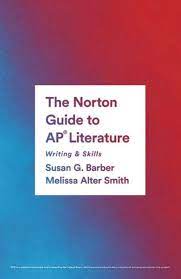My AP students enter my class having read Romeo and Juliet in ninth grade… and that’s it. No Othello in 10th. No Julius Caesar. No Hamlet. It’s the hand I’m dealt and rather than lament this, I have to get to work building skill as quickly as I can. This isn’t an easy task because Shakespeare’s language can be difficult for experienced readers, let alone ones that lack exposure.
I knew I had to develop a way to reduce their inhibitions, build their close-reading skills, front load information about the play, and make it fun and inviting at the same time. That’s when I came up with Shakespearean Musical Chairs. Here’s what I do:
Before the lesson
- I pull the 30 best quotes from Act I and print them in 20pt font.
- I cut the quotes into strips.
In Class
- I tell the students that they will gain knowledge about the characters, setting, and conflict of the play, and they won’t even open their books to do it.
- I then place a quote on each student’s desk as well as a graphic organizer and tell them that we are going to play a game of musical chairs, yet it is not competitive. We don’t remove chairs as we go.
- The students are then instructed to arrange the desks in a circle, leaving enough room behind the desks for them to walk.
- I then start the music — songs that are thematically relevant to Macbeth, although they don’t know it at the time. I tell them to start moving in a circle and when the music stops, they must sit down at the desk in front of them.
- Students have to read the quote at that desk closely. On their graphic organizers they must record what is revealed in the quote. Some quotes may reveal something about a character, some about the setting, others about the conflict. Each quote is chosen by me because of its significance in some way. They have to figure out what it reveals.
- As they are reading and writing, I’m circulating the room helping students individually with difficult vocabulary and also walking them through the metaphors, paradoxes, and other figurative devices. I’m support them with the strategies to build their close-reading skills.
- After two or three minutes, I start up the music again and we repeat the process. New desk, new quote, new chance to learn something important about Act I.
Closure
- We do this for 20 minutes, then return to rows to make sense of it all. I ask questions about what they learned. It is always impressive to see how much knowledge they’ve gained in 20 minutes. They tell me that Lady Macbeth is psychotic. They offer that Macbeth seems to be a proud warrior but wants to be king. They notice that atmosphere is murky and dark. They also pick up on the witches and suggest a supernatural element. In essence, they are giving me a summary of Act I before they have even read page 1. It is incredible to see how right they are.
What is effective about this approach is twofold. First, it takes something that is intimidating and fearful for many students — Shakespeare’s language — and makes it fun, approachable and non-threatening. Second, it frontloads valuable information quickly and enjoyably. I could just open to page 1 of the play and start reading. I could put background information about Macbeth on a Powerpoint and walk them through slide by slide. But this puts the text right in front of them. It gets them up and moving. Not a single head is down. Participation is virtually guaranteed. And they are building close-reading skills and don’t even realize it.
I assign Act I for homework over the next few days. Students will see those same lines at home in a much greater context and will be able to draw upon their prior knowledge from musical chairs. It will all assimilate into a deeper understanding of the text because they built a foundation of skill and knowledge from musical chairs. They are also gaining the confidence that they can handle difficult material on their own. Win-win.
Application
This activity is not just an English activity, it can be used in a variety of classes. A history teacher can frontload knowledge of the Civil War by having students interpret facts about major battles. Chemistry teachers can build knowledge about the elements on the periodic table. Foreign language teachers can place a new word on each desk that pertains to an upcoming unit, asking students to make educated guesses about their meaning.
The graphic organizer must not be overlooked. It is where the learning is recorded. For it to be effective, it must reflect the questions that students should ask and of the material and their answers to those question should synthesize the learning that will occur.













3 comments
Laurie Fuller
Hi Brian,
I am going to adapt this for the next novel study I use with my struggling 8th graders. For the graphic organizer, do you simply give them a chart with columns labeled for quote #, what it reflects about character, setting, plot, etc.? Thank you for putting your ideas out there for other educators.
Laurie Fuller, Maitland, Florida
Anne
Hello! My co-teacher and I came across this article, and we love this idea. Would you be willing to share the resources you use for this activity (the graphic organizer and quotes)?
Thanks for the great idea!
Anne Fortney
Shanna Saverance
I would love to see what your graphic organizer looks like.